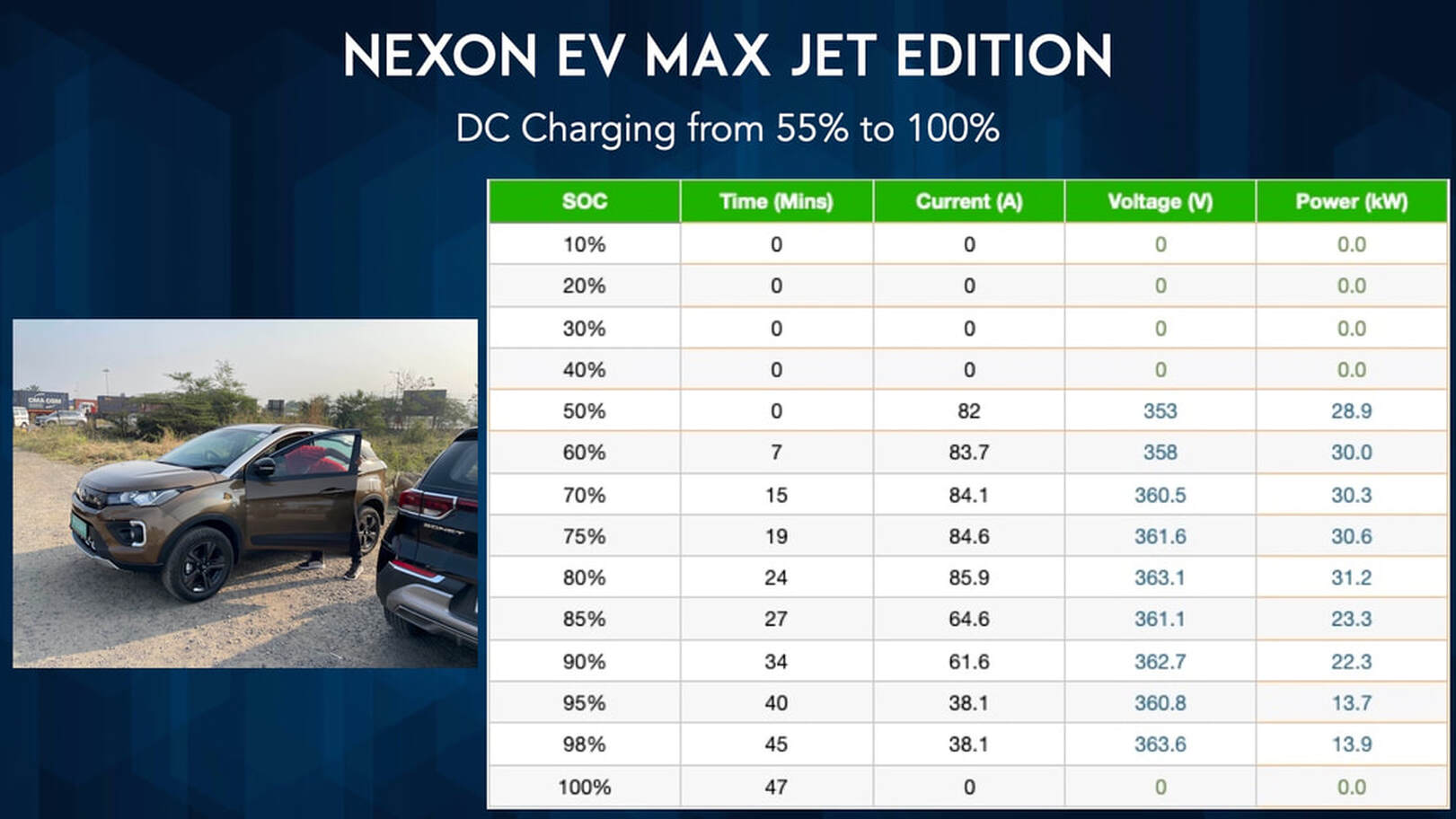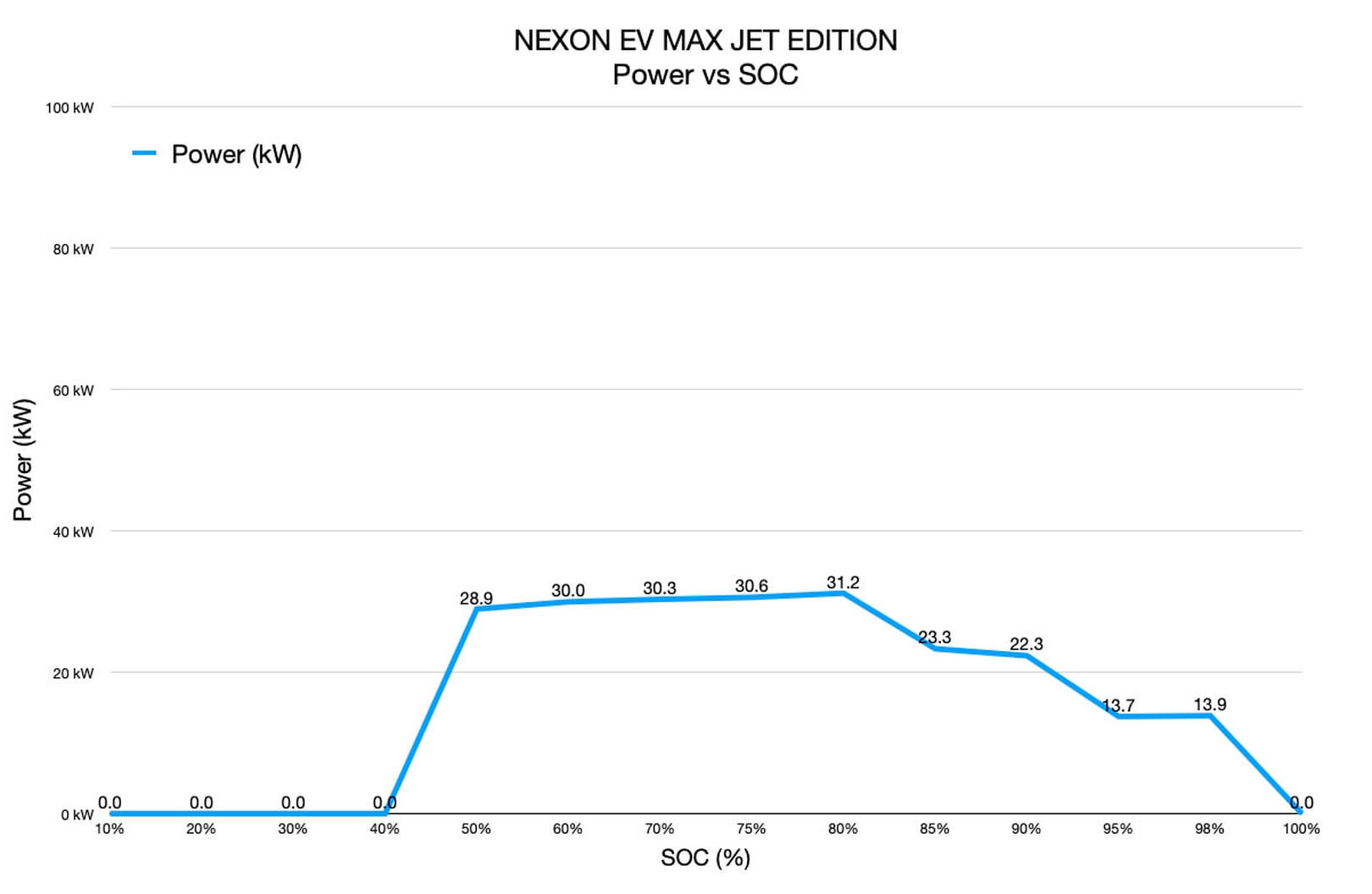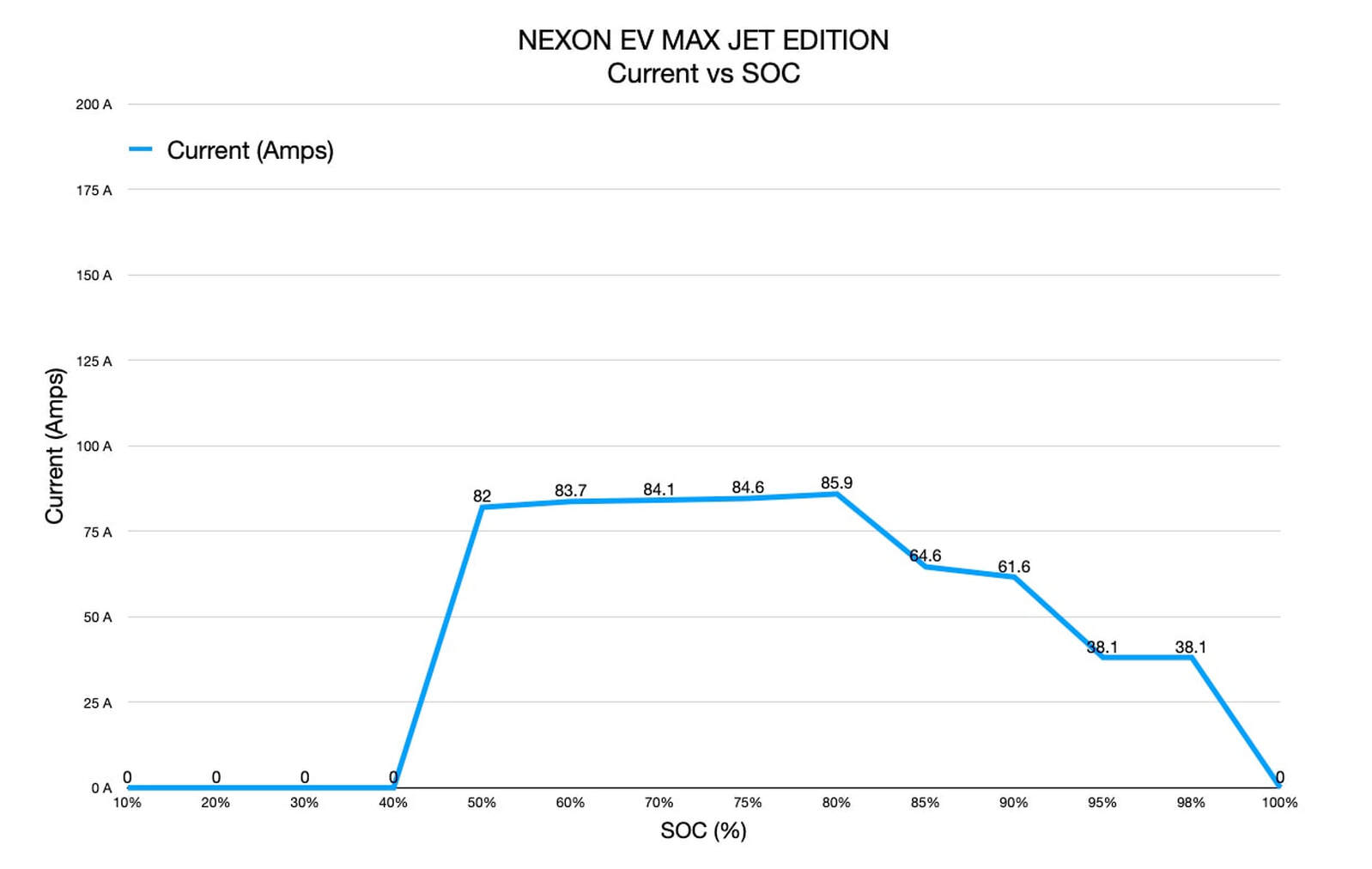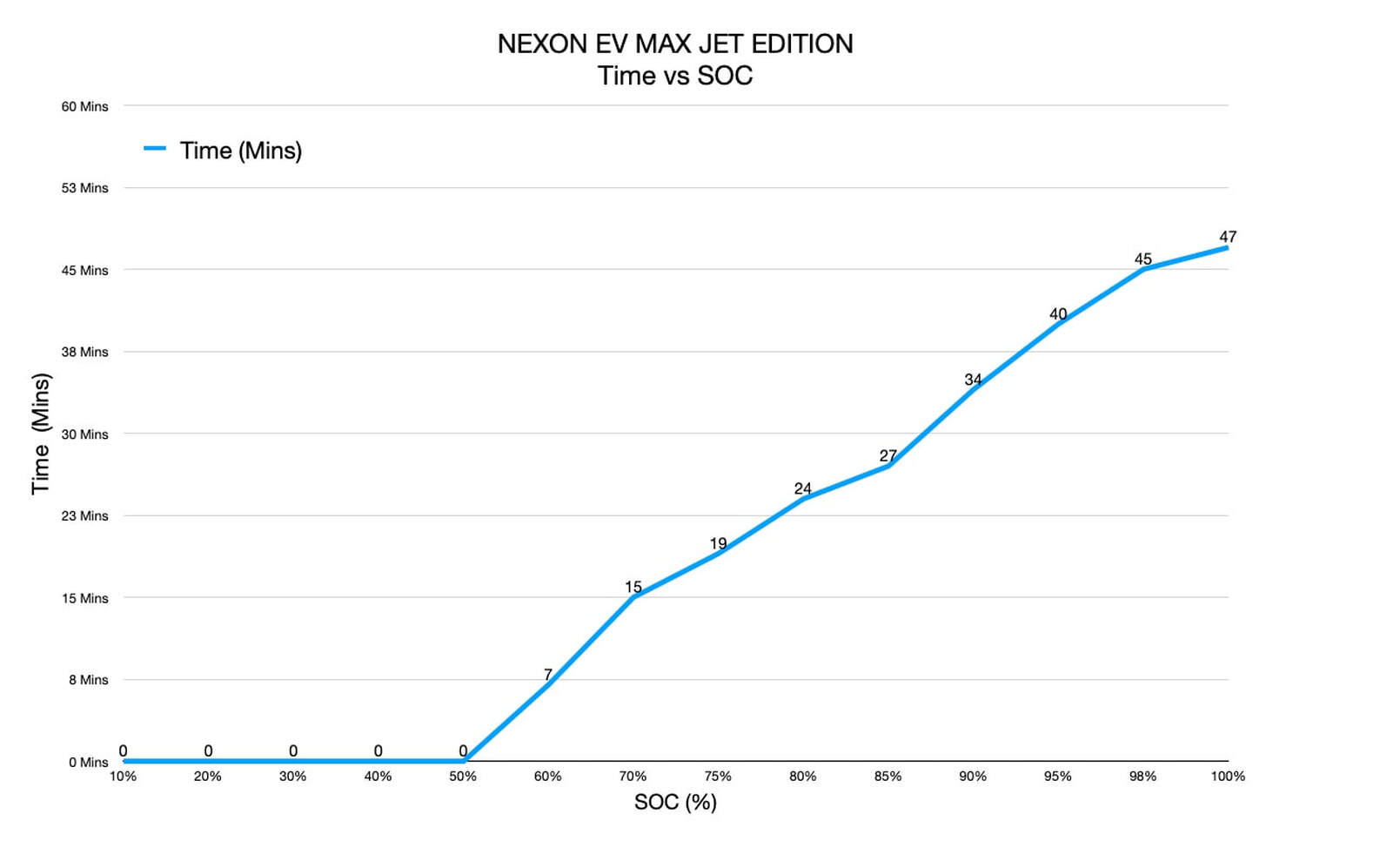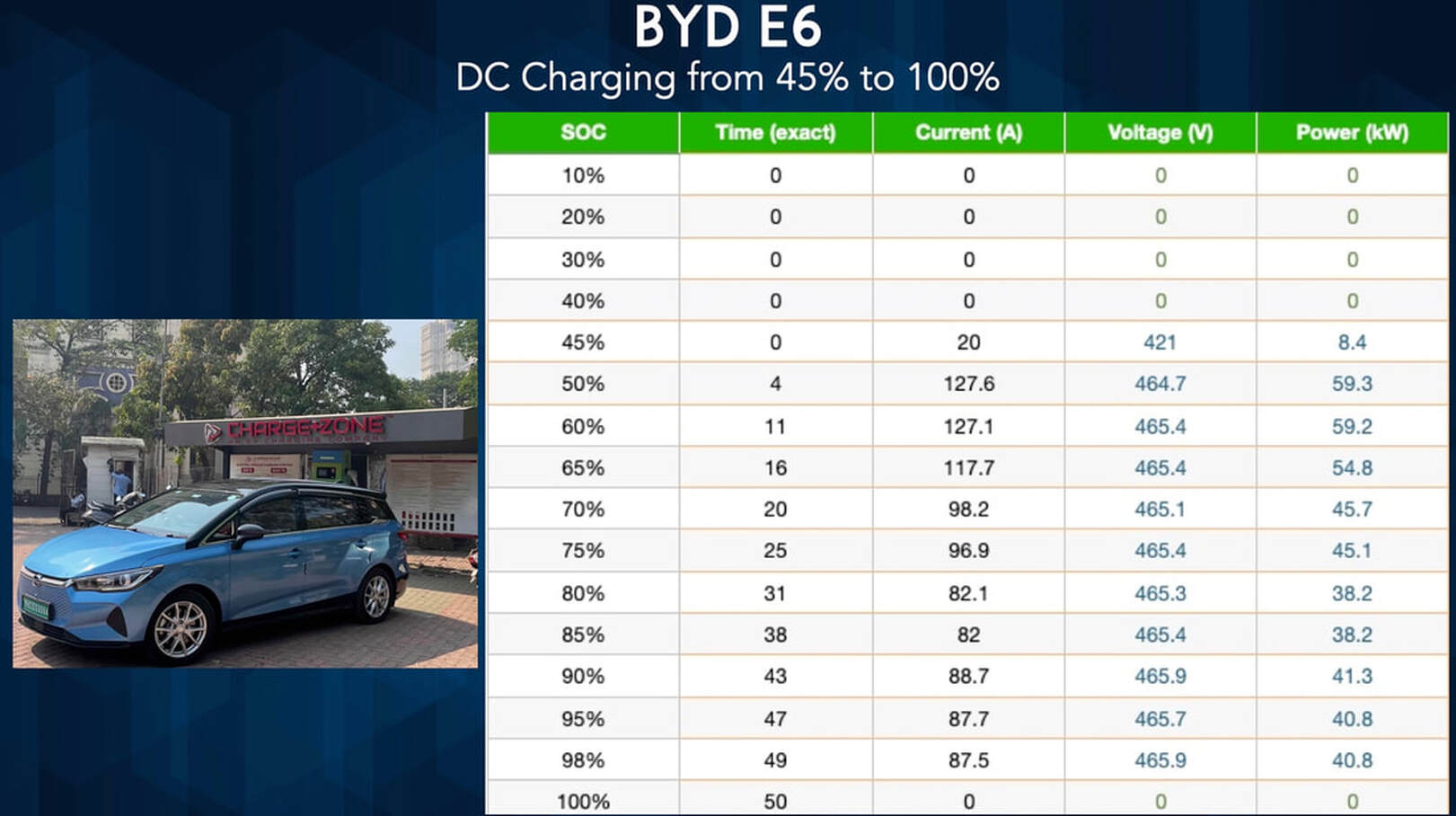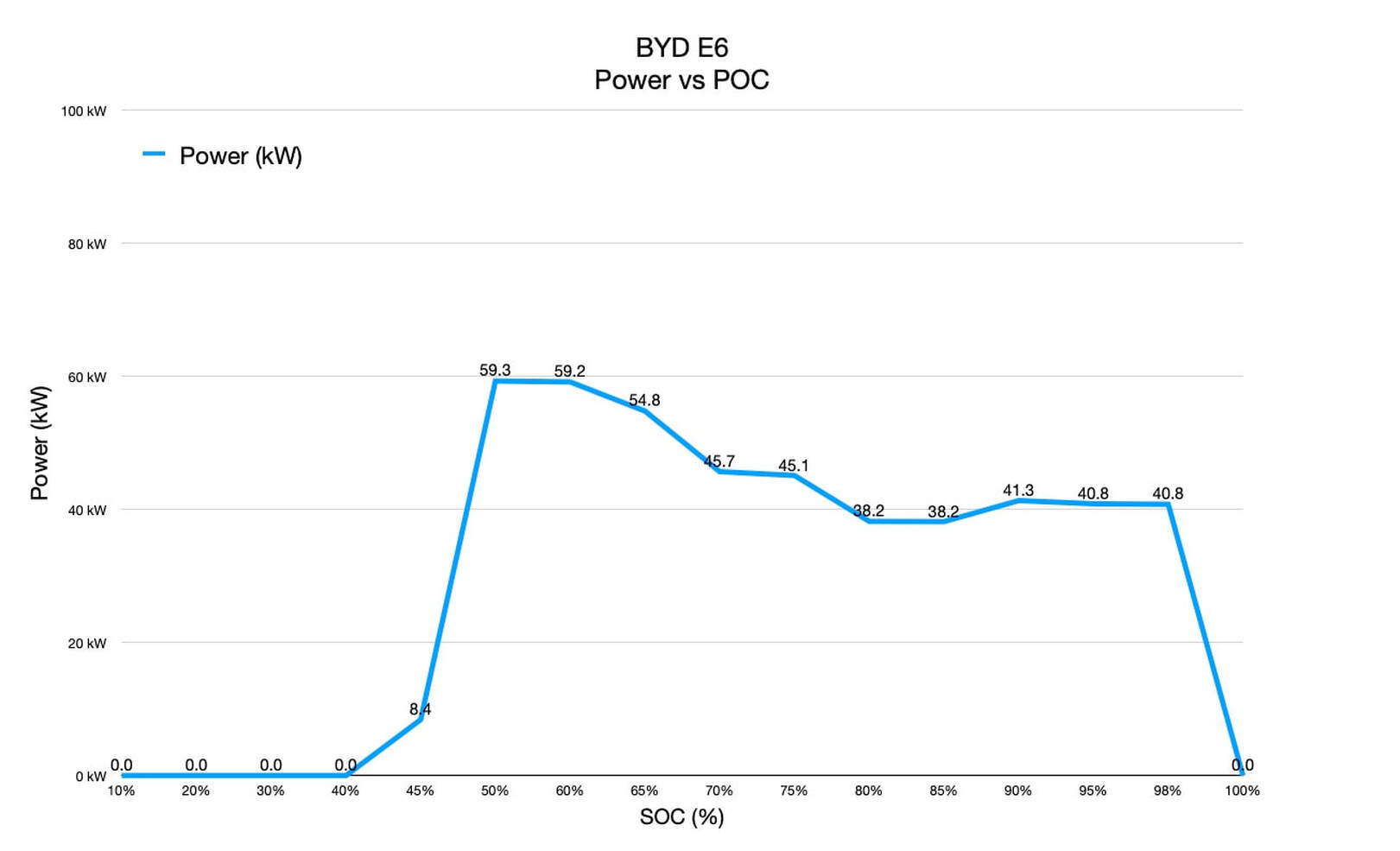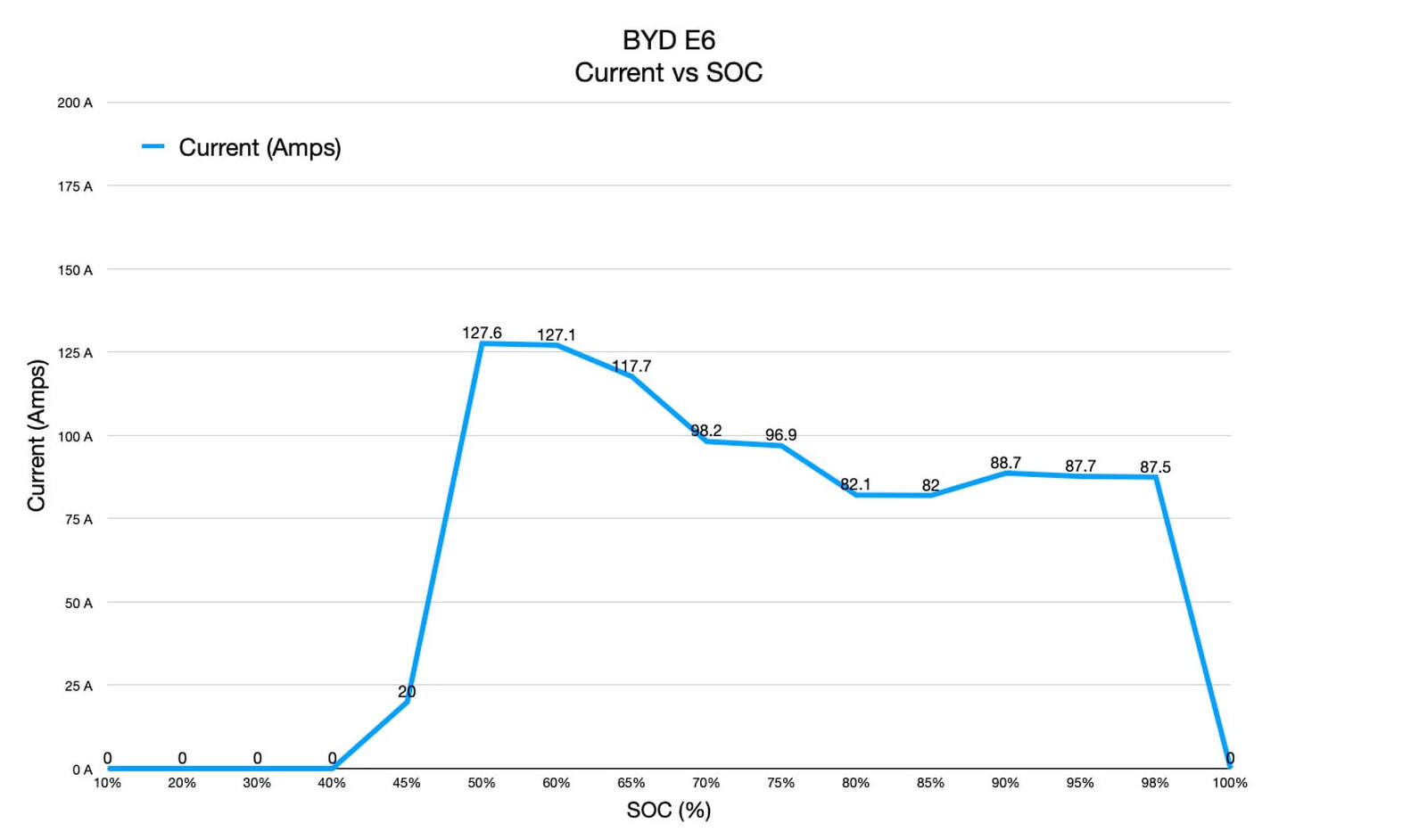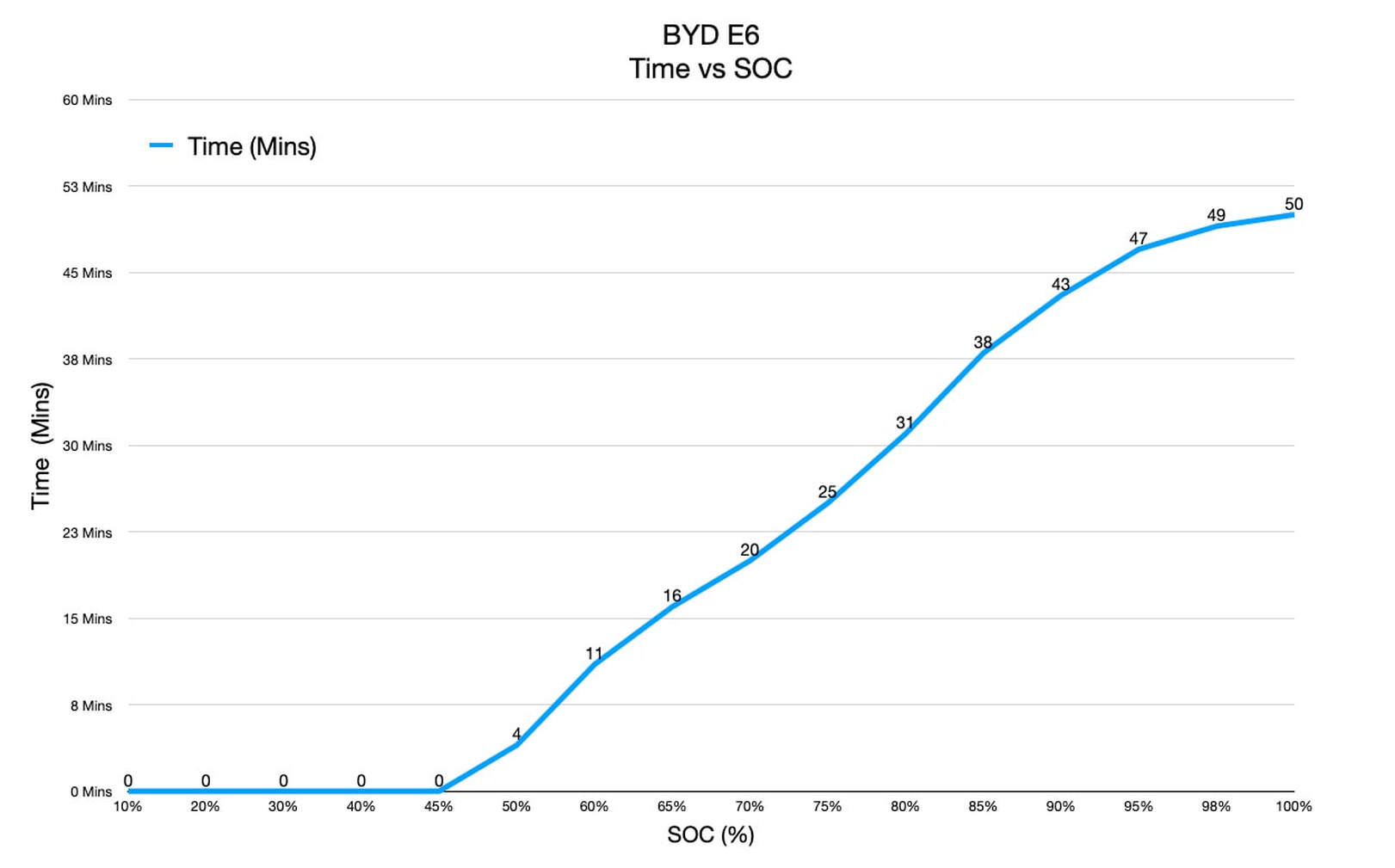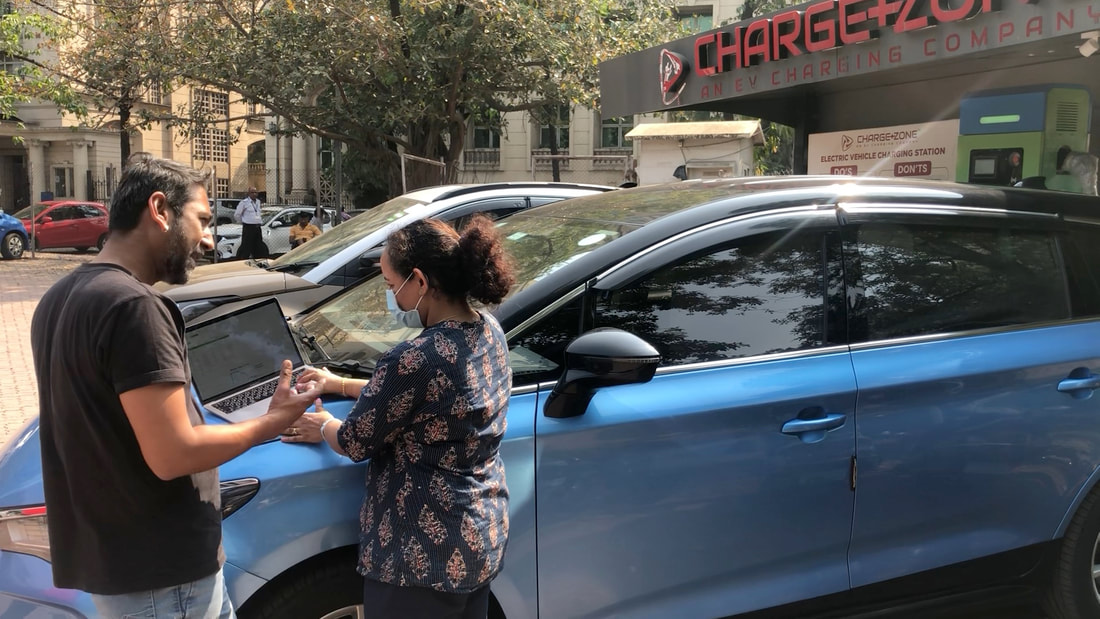- The Nexon EV Max JET edition has a 40.5 kWh battery pack & the BYD e6 has a 71.1 kWh battery pack.
- The Nexon EV Max can DC fast charge at around 30 kW and the BYD e6 can charge at around 60 kW.
- The Nexon EV Max is built on the Ziptron platform with 400 V architecture.
- The BYD e6 is built on the e-Platform 3.0 which is based on a 600 V architecture.
- The Nexon EV Max can do around 275 km per charge and the BYD e6 owners are getting 500+ km regularly on the highway!
Nexon EV MAX
- Nexon EV MAX starts charging and as you can see the amperage is ramping up, ramping up until it hits 82 A and remains stable thereafter as you can see in the Masstech Charging equipment. The pack voltage is around 353 V
- After 7 mins of fast charging, the SOC (State of Charge) is 60%, the current is at 83.7 Amps and the voltage has stabilized now at 358 V. The Power is at 29.96 kW
- After 19 mins, the current is slightly increased at 84.6 Amps. it has been steady all the way for 19 straight minutes. The SOC is 75%, Voltage has been steady at 361.6 V. The power being delivered is 30.5 kW
- One observation with the KIA EV6, we have seen that they operate at a lower current and a high voltage. They can get from 20% to 50% in less than 10 mins, here with the Nexon EV Max, we completed 20 mins of DC fast charging and we have got 25% worth of charge. We can clearly see the difference in the fast charging speeds of the KIA EV6 which is built on a 800 V architecture and Nexon EV which is built on 400 V architecture.
- At 85% SOC and the readings are as follows, the voltage has been steady from the start at around 360 V, the current is dropping off significantly at 65 Amps
- We usually charge our electric cars upto 90% all the time, whenever we do road trips, as the charging speed reduces dramatically after the SOC is 90%. It makes sense to unplug and drive at 90% and move on to the next stop. But for this exercise to complete the graph, we will let it charge upto 100%
- SOC of the Nexon EV Max is 95% and the readings are as follows, the voltage is still maintained at 360 V, the current is dropping off significantly at 38.1 Amps. This power has been reduced to 13 kW. This shows that its not worth waiting after 90% SOC at a fast charger.
- The BYD e6 starts charging at 45% and as you can see the amperage is ramping up from 20 Amps and it stayed at 20 Amps for a few minutes. We are not sure why the BMS of the E6 only accepts 20 Amps initially. Maybe there the BYD battery pack needs some pre-conditioning for a while before fast charging.
- After 4 minutes, we see that the current ramps up to 127 A and remains stable thereafter as you can see in the display of the Masstech Charging equipment. The pack voltage is around 465 V.
At other fast charger brands, we have noticed the pack voltage go higher at 572V. This shows that the BYD E6 with a 600 V architecture will get charged at various voltages depending on the charging equipment design. - After 11 mins of fast charging, the SOC is 60%, the current is still at 127 Amps and the voltage has stabilized now at 465 V. The Power being delivered is 59 kW
- The BYD e6 is almost at full charge at 98% SOC amazingly the current being delivered is still 82 amps at 40 kW, which was not the case with the Nexon EV. With the Nexon EV we saw a significant drop in the current as SOC increases.
We have seen two electric cars charging at variable speeds at variable power values. There are two ways to get a lot of power in an electric car when fast charging at these chargers. You can dump a lot of current in but it gets inefficient, there is a lot of heat loss. To reduce the amount of losses, you can step up the voltage, which is exactly what the BYD does with the 600 V architecture. We saw how the voltage was higher when we were charging the BYD compared to the Tata. That is the benefit of having a higher voltage system.
Nexon EV
Let's look at the graph where we show the Power at which the Nexon EV MAX was charging from 50% to 100% SOC. As you can see the Nexon EV Max can peak at 30 kW (kiloWatts). So even if you go to a 60 kW or a 120 kW DC charger, the peak will always remain at 30 kW. After 80% the Nexon EV MAX's BMS accepts a lower power and you can see the rate of charging decreases rapidly. After 90% you are charging speed plummets to the teens and slows down rapidly after.
If you look at the next graph, the current being pumped into the Nexon EV MAX's battery. The more current you see here, the more faster you can change the electric car's battery.
We have seen the KIA EV6 charge at around 200 Amps and that is an example of super fast charging. As you can see the Nexon EV MAX zooms to 82-83 Amps when we started charging. And then hits a peak of 85.9 amps. At 80% SOC, you see there is a decrease in the current demanded by the BMS. And after 90% there is a dramatic drop in the current demand.
These two graphs tells me that the Nexon EV's BMS has a conservative design. They don't want to cause stress to the LFP cells as more heat builds up as the State of Charge increases and the Nexon's BMS is playing safe by reducing the current supply.
In the entire observation the Voltage of the Nexon EV remains consistent at around 360 Volts.
BYD e6
Let's look at the graph where we show the Power at which the BYD e6 was charging from 50% to 100% SOC. As you can see the BYD E6 can charge upto 60 kW (kiloWatts) but in this case it touched a peak of 58.3 kW (kiloWatts). So even if you go to a 120 kW DC charger, the peak will always remain at around 60 kW. One interesting difference with the BYD E6 was, at the start it took 1-2 minutes to get going. It was charging at 8.4 kW. Maybe the BMS of the E6 was doing some battery pre-conditioning or cooling at this stage. But once that was done the power zoomed to around 60 kW and remained there. After 60% SOC, there was a slight decrease. At 80%, it remained steady at 40 kW even after 95% SOC.
If you look at the next graph, the current being pumped into the BYD E6's battery. The E6 demanded 127.6 Amps of current at its peak. After 80% SOC, it consumed a steady 87-88 Amps even when the SOC was near 100%!
You can clearly see the BYD e6's BMS is not bothered if the SOC is higher, it just demands current at a consistent rate and there was no sudden plummeting of power and current demand, like we saw with the Nexon EV MAX.
This was very interesting. When going on highway trips it makes sense to charge upto 80-90% and get going. There is no point waiting to charge upto 100% as you see how the rate of charging slows down. Also, these graphs show how the BYD E6's BMS algorithms, Battery Cooling, Thermal management seems to be at a different level compared to Tata Electric Cars. The fact that the BYD E6 charged at around 40 kW even at 95% SOC was fantastic! Let's hope Tata updates their systems as well and we see improvements in the coming future.

